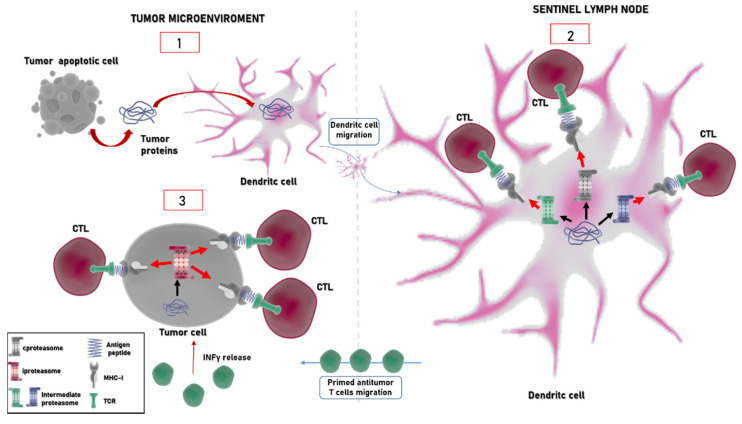Figure 3.
Activation of antitumor T cells mediated by proteasomes. At the tumor site, apoptotic cells release tumor proteins which are internalized by dendritic cells (1). These cells migrate to the sentinel lymph node, where peptides are derived by proteasome (mainly constitutive (in grey) and intermediate proteasome (in green and in blue) particles). Different populations of proteasome are represented with different colors in the figure, as indicated also in the legend. Degradation of tumor-associated proteins is presented to naïve T cells in complex with MHC-I molecules (2). Primed T cells migrate to the tumor site (3). The in loco production of IFNγ induces the expression of i26S (in red) which becomes the prevalent form of proteasome in the “hot tumor site”. Thus, tumor cells with a high content of immunoproteasome change their antigenic peptide repertoire, which can be targeted by other circulating T cells.

